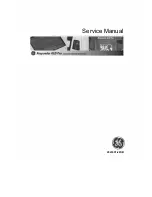
Hazardous area supplement to the QuickStart
OPTIFLUX 8
3.1
Equipotential
bonding
•
As the EEx ia electrode circuits of the flow sensors are effectively grounded through the conductive liquid in the
measuring tube, an equipotential bonding system must exist over the whole area in which the electrode circuits,
including their wiring, are installed, conform EN 60 079-14 clause 12.2.4.
•
The flowmeters OPTIFLUX 4000-EEx and 5000-EEx, the electrode cable and the IFC 300 F signal converter must all
be included in the equipotential bonding system of the hazardous area. If a single separate conductor is used for
equipotential bonding, than this conductor must have a cross section of at least 4 mm2 copper.
•
The separate equipotential bonding conductor between flowmeter and converter can be left out, if by other means (e.g.
over bonding conductors over the metal piping system) a high level of assurance that potential equalization exists
between flowmeter and converter is reached.
3.2
Cable and
conduit entries
The flowmeters are normally delivered with two EEx e certified cable glands. If these are replaced by other cable glands or
thread adapters, the replacements must also be EEx e (Increased safety) certified and suitable for the conditions of use and
correctly installed. For gas (G) hazardous areas the replacements must have a minimum IP degree to EN 60 529 of IP54.
For Dust (D) hazardous areas the minimum IP degree must be IP64.
Unused openings must be closed with suitable certified closing elements. With the use of conduit, a suitable certified
sealing device, e.g. a stopping box with setting compound must be provided immediately at the entrance to the flameproof
enclosure (converter housing).













































